Bottom watering your plant pots has some great advantages. Houseplants, patio containers, and potted garden plants often benefit with this method.
What is Bottom Watering? This is a method of applying water to the plants root zone through the bottom of the plant pot. Rather than watering at the top of the plant soil and allowing water to drain into the root zone from the top.
With Bottom watering your plant pot soaks up water from the bottom drain hole. You can do this in a tray, sink or pot until the soil is moist. Self watering pots also water plants from the bottom.
This post goes over the advantages of bottom watering for you and your plants. We discuss which potted plants will benefits most from this watering method.
I’ll also cover the various methods and strategies for bottom watering. We’ll look at some pots that work well for bottom watering.
…and I’ll share a few of the downsides. There is always a downside. 🙂
Top watering is watering the plant from the top of the soil with your watering can, shower or faucet. Occasionally, some plants enjoy a shower and even a drench from the top.
But most often bottom watering is best for the plant.
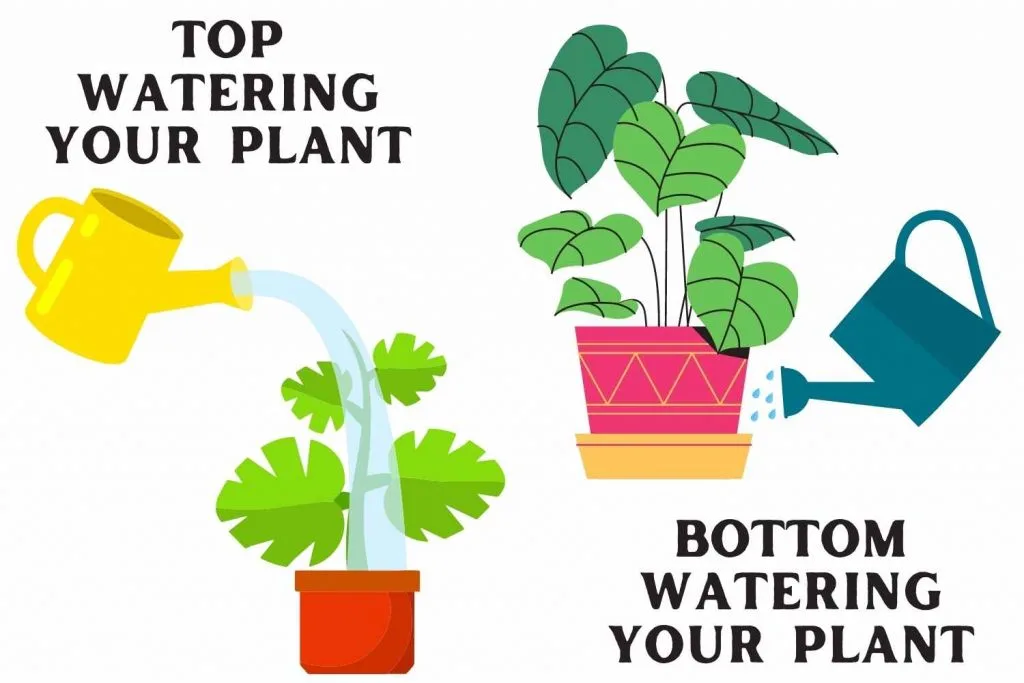
Kayti and I both mostly bottom water our houseplants these days. We find it benefits the plants and us too.
Why Bottom Watering Potted Plants is a Good Idea:
- Healthy roots: The roots are forced to grow down deep into the pot to reach water. This promotes healthier plant roots that take advantage of all the soil in the pot and the nutrients.
- Bottom watering Keeps the water off the plant leaves. This is important for fuzzy leaved plants. African violets and other fuzzy leaved plants do not like wet leaves..
- Bottom watering avoids compacting soil around houseplant roots. Soil compaction reduces oxygen flow to plant roots and sets up the plant for root rot. Yes, plant roots will die and rot from lack of water.
- Dry Top Soil Deters Fungus gnats. I had a HUGE problem with fungus gnats after top watering for a year. After 6 months of bottom watering my gnat problem has decreased considerably.
- I find bottom watering cleaner, more accurate and for most of my plants, it doesn’t take any more time. I only soak my Phalanopsis orchid and that is bit more time consuming.
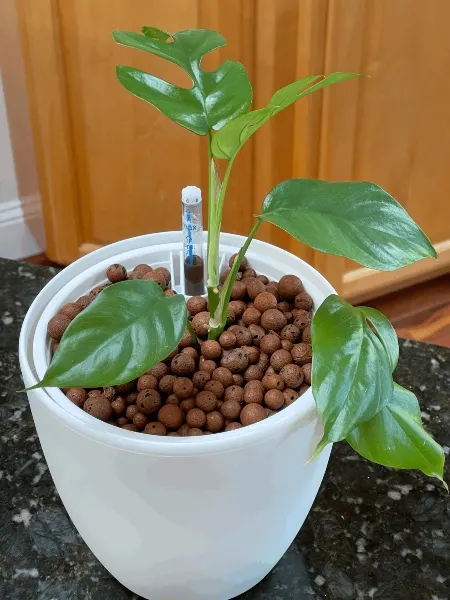
Self Watering pots are a GREAT idea for growing plants in LECA Clay balls.
Read our entire series on Growing plants in Leca.
LECA is a bottom watering system that many plants really thrive in.
Which Plants Like bottom Watering?
Houseplants generally are easy to bottom water since they are often small and portable. They fit easily into commercial self watering pots which water from the bottom of the root zone. And deep trays or drain plates are readily available.
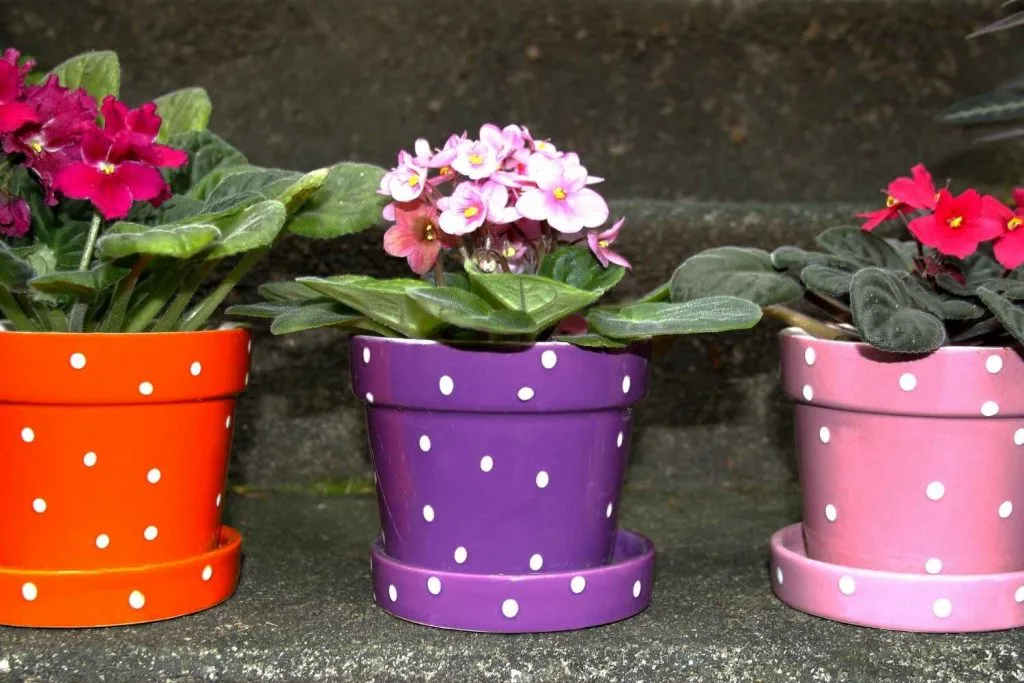
Almost all plants do well with bottom watering. I can’t think of one that won’t. There are some plants that will do MUCH better with this method for these reasons.
- African violets and other flowering plants do not want the top soil wet. It leads to flower rot, water spots on leaves, leaf and soil fungus, and soil viruses.
- Bottom Watering Succulents is preferred. More on that below
- Any plant with fuzzy or water sensitive leaves is better watered from the bottom to protect the plants leafy growth.
Bottom Watering Succulents:
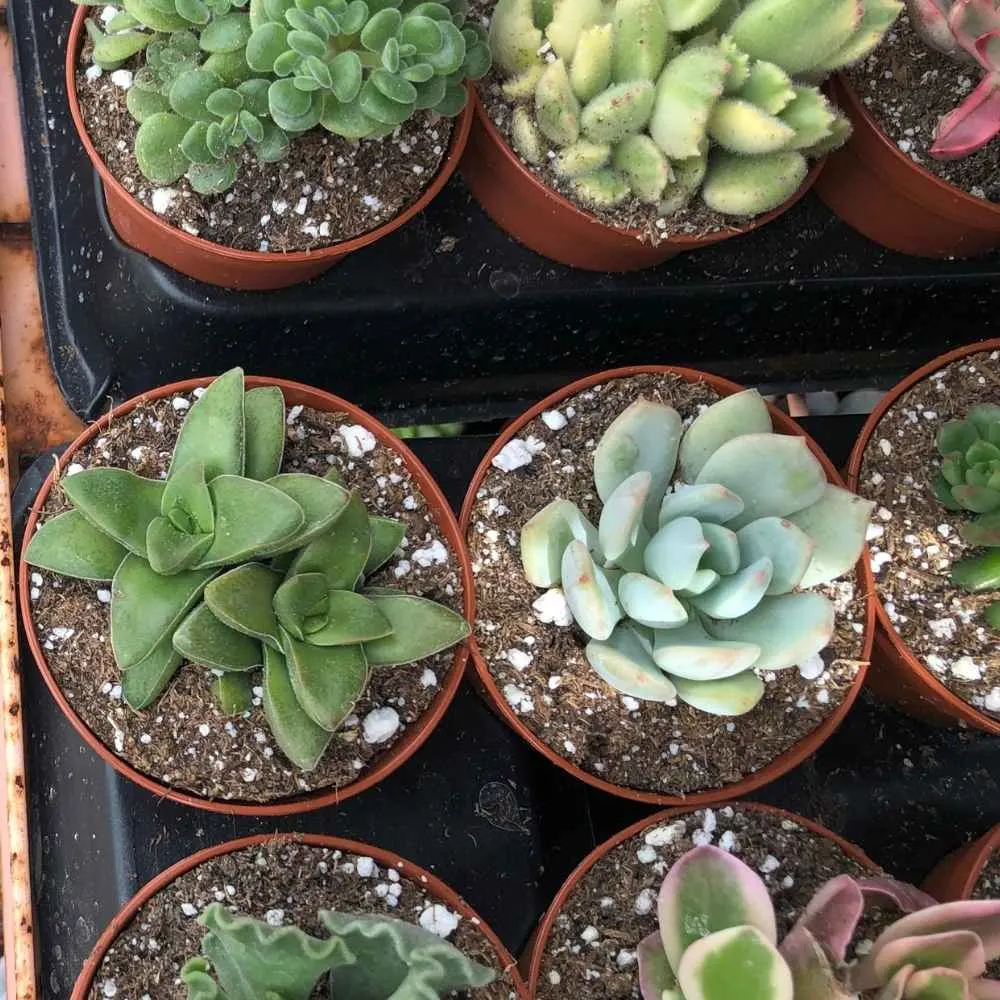
Constant top watering is problematic for succulents. It causes soil compaction. Hydrophobic soils (soil that will not absorb water when it gets really dry) is a common problem with succulents.
How do you know your soil is hydrophobic? It won’t absorb water. Absolutely Dry soil cannot hydrate your plant roots or feed them.
In hydrophobic soils, when you add water to the pot from the top, the water runs off the soil and slides down between the soil and the pot interior. The solution here is to soak the plant from the bottom.
As you see pictured, succulent leaves hold close to the soil. Wet soils rot those leaves and spread viruses rather easily.
Bottom watering succulents is a definite plus for them.
Read our Complete Guide on Watering succulents

How to Bottom Water:
These are some different Methods to Bottom water Plants. They all work. Just choose a method that works best for you.
- Self watering pots have reservoirs of water in the bottom. They wick water up into the plant root zone.
- water globes and spikes can drive water right to the root zone. This is a solution to top watering when you can’t access the planter bottom. Learn more about plant watering globes in this post.
- Leca semi hydroponic system hydrates plants from the bottom from a reservoir. The clays balls wick the water up to the roots. The roots take what they want.
- You can set your plant pot into a deep drainage plate with at least an inch or more of depth. This depends on the planter bottom. A thick pot bottom will need a higher level of water in the drain plate to access water to the plant.
- Use a watering tray. You can group plants like African violets and succulents into a large tray. When you water just water into the tray and allow the plants to suck the water.
Best Pots for bottom watering:
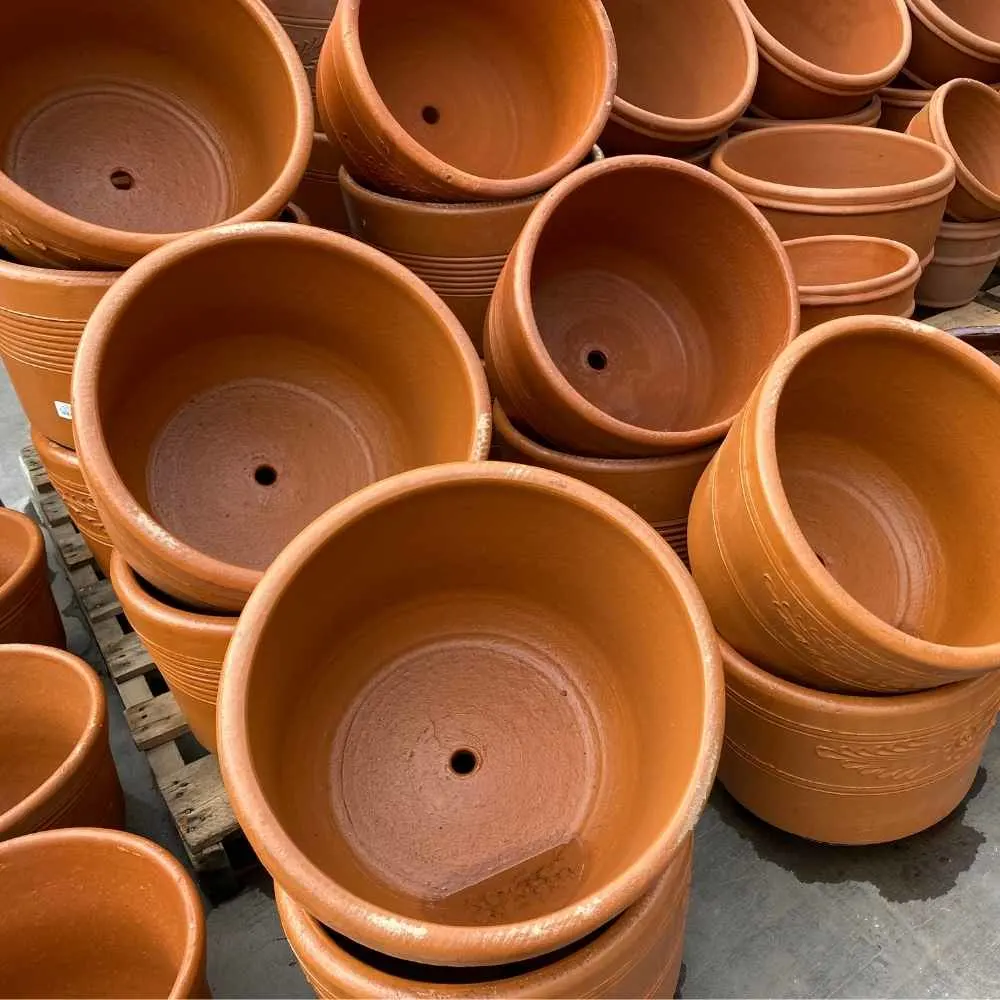

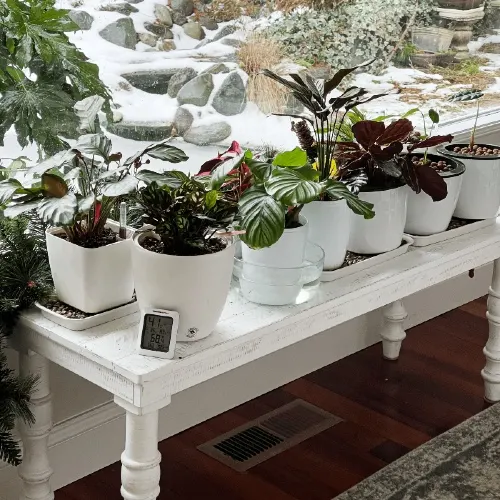
There are MANY pots that will work great for bottom watering. You can use any pot that suck up water from the bottom. As discussed above there are many ways to work with a pot to make it work for bottom watering.
- A drainage hole in the bottom of the plant pot is a must.
- And the soil pot must have a receptacle under it to hold water. This can be a shallow plate, tray, or deep plant drain plate.
- You must be able to periodically add water to the receptacle. Or remove the plant pot to a sink, tub, or large pot to soak up water.
- Or use a system like LECA or self watering pots that hold the water within the pot and allows you to refill it occasionally.
- Whatever pot you choose do NOT plant into a pot with no drainage. Prolonged wet soils will result and rot your plant roots. Learn how to fix root rot here.
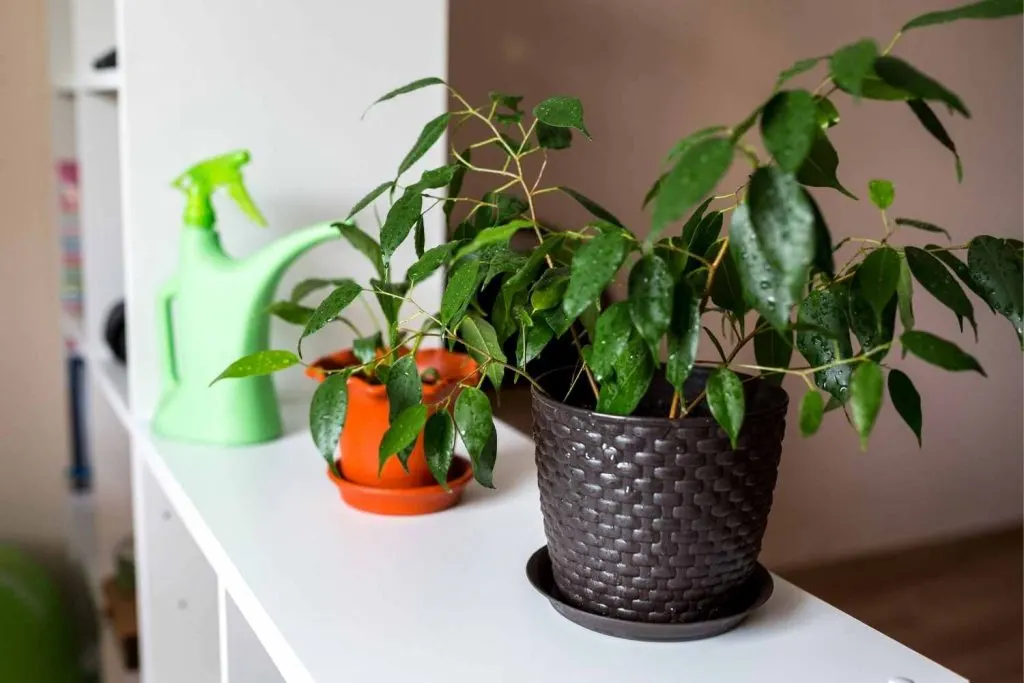
How to Fix a Pot with No Bottom Drainage?
- Make your own hole in the bottom of the pot. I use a hammer and nail to make a small hole in pots. Be careful so your don’t shatter the pot. This is especially risky with brittle materials like clay or ceramics.
- Once you have a hole started, take a large screw driver and work it around the hole to open it until it is big enough to drain.
- If your pot cannot have a bottom hole, add pebbles to the bottom and use it as a cover pot for a draining pot. This will give you plant bottom drainage.
- You can water from the bottom by lifting the inside pot up to add water to the cover pot as needed. Return the plant pot so it can suck up the water.
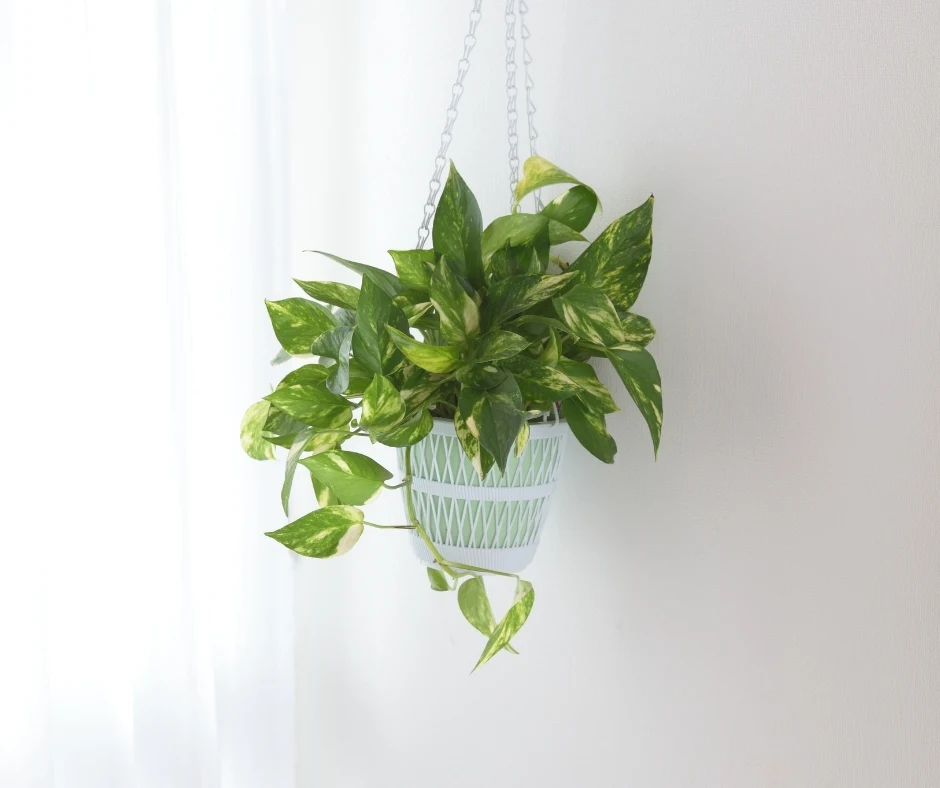
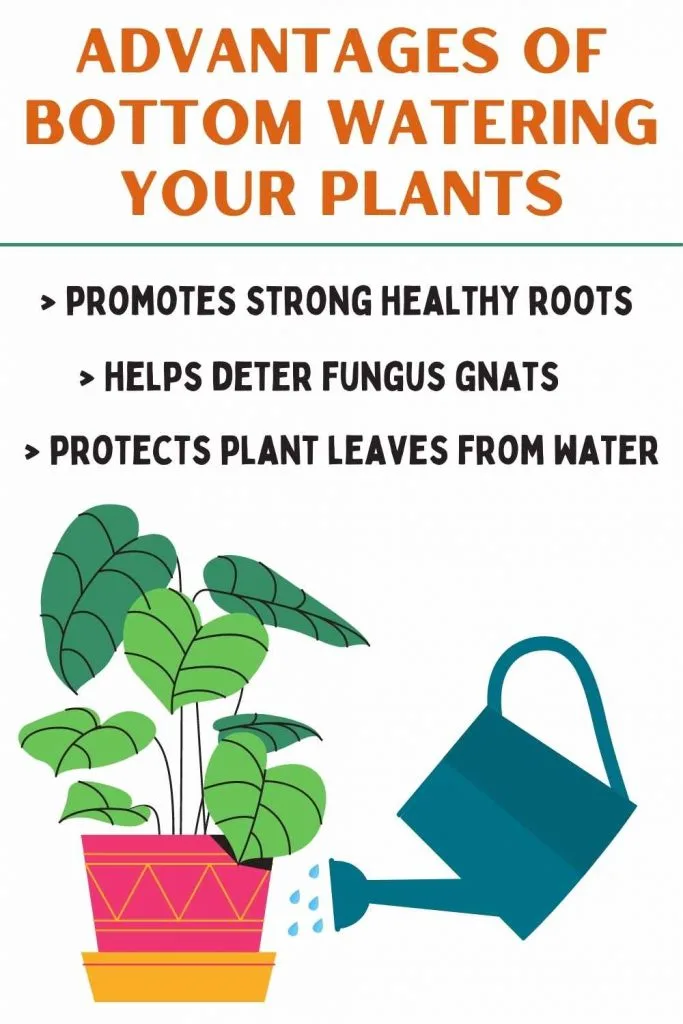
More Suggestions for Bottom Watering:
- Hanging planters are best as self watering pots or pots with DEEP drainage plates so you can bottom water easily and less often. Hanging plants tend to dry out more quickly than lower plants on shelves.
- Collections of similar plants can be grouped on a watering tray. You can devote a shelf space or cart to your whole collection of succulents or African violets for example. Water directly into the tray and let the plants suck up the water.
I find it easiest to use self watering pots for bottom watering. I have to water less often and have fewer messy drips around the pot.
Etsy is full of shops that sell really cute self watering planters. Many of these shops are in the USA and are run by small families with great reviews from their buyers. Take a look!

Downsides to Watering Pots from the Bottom:
- Can you overwater with bottom watering? Yes. As I mentioned above, Allowing your potted plant to suck up too much water from the bottom is just as damaging as overwatering from the plant top. Test the soil for dryness before you water.
- It can be messy. Rough bottom planters can mar your sink or tub. A wet plant may leak and leave a trail of dirty water as you move it back to its plant shelf. Let them drain thoroughly before removing from your sink or tub.
- It takes more time if you have to soak them. You will need about 10 minutes to allow your houseplant to absorb water from the bottom. Then they need to drain completely.
- When to Water From The Top: Occasionally you need to water your plants from the top to leech out excess salts that eventually accumulate in the soil. Leech the soil by soaking it from the top and allowing the water to drain completely through. This will run excess salts and fertilizer accumulations out of the pot.
- Some plants or pots make it difficult to water from the bottom. You will need to plan ahead if you want to water large pots too heavy to move.
- For large patio containers or garden containers bottom watering is not easy to set up. Use trays under your large pots or water globes.
- Dave Made DIY strawberry towers for our garden that actually use a middle pole in the center of the container to drip water out to the plants. This is also watering into the root zone. It’s just sort of a sideways method. It has worked well for our strawberries.
Follow Us:
Find us on YouTube, Instagram , Pinterest and TikTok! We love to Plant chat. We also comment, like and occasionally share your content to our daily stories. We’d love to see your plants. Share your joy in your houseplants. Happy Planting!
Related Content:
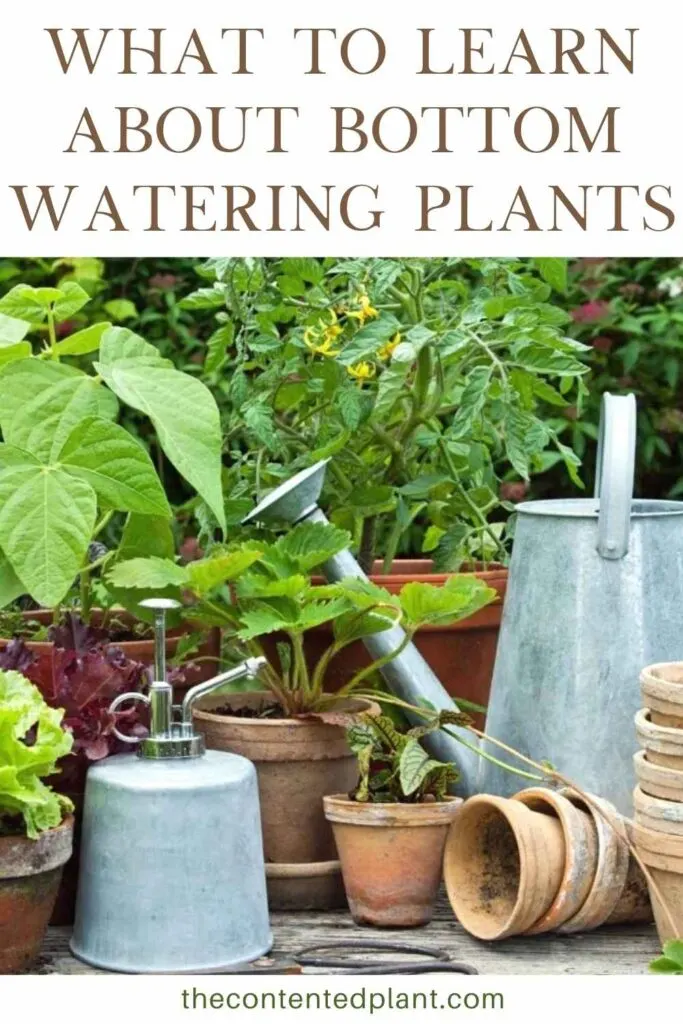

Tom Fischer
Monday 20th of February 2023
I bought self watering pots with a see through water level. When it shows low do I lift up the top container with the African violet and refill, OR add water thru the top with the violet until the see thru level is high again. Lastly, do I wait to add water until the soil is dry and the moisture meter shows dry?
Thanks,
Tom 3:45 PM
Diane Williams
Friday 24th of February 2023
Hi Tom, Most self watering pots will come apart. I have the ones your are talking about that are pretty tight and require that I press the side of the pot near the top to release the bottom pot from the top. Once that is done you can add the water into the pot base.
It is fine to water the plant down through the top of the pot but don't over do it. This is not bottom watering but rather using the base as more of a catch basin for the water that drains through. Which is fine but African violets are pretty picky about watering so make sure you don't allow too much water to drain though or you'll drown the plant.
I have overwatered like this and it can take awhile for the soil to dry out when it is constantly sitting in a pot of water. Best way is to separate the top from the bottom and water up to almost the top of the window so you can see the water level. All the best!
Choosing the Best Succulent Pots - The Contented Plant
Saturday 29th of October 2022
[…] Bottom Watering Plants in Pots: […]
Murdannia Loriformis-The Bright Star Plant - The Contented Plant
Friday 15th of April 2022
[…] Watering from the top can attract Fungus Gnats. One way to keep the soil at the surface dry and the plant watered is to bottom water. Learn how to bottom water in this post. […]
Pothos-Epipremnum aureum-(Devils Ivy) - The Contented Plant
Wednesday 23rd of March 2022
[…] Learn more about Bottom watering hanging plants here. It is easiest watering method for hanging plants and promotes the best root growth. […]
Tips on how to build a pollinator garden - The Contented Plant
Tuesday 22nd of March 2022
[…] Watering Methods […]